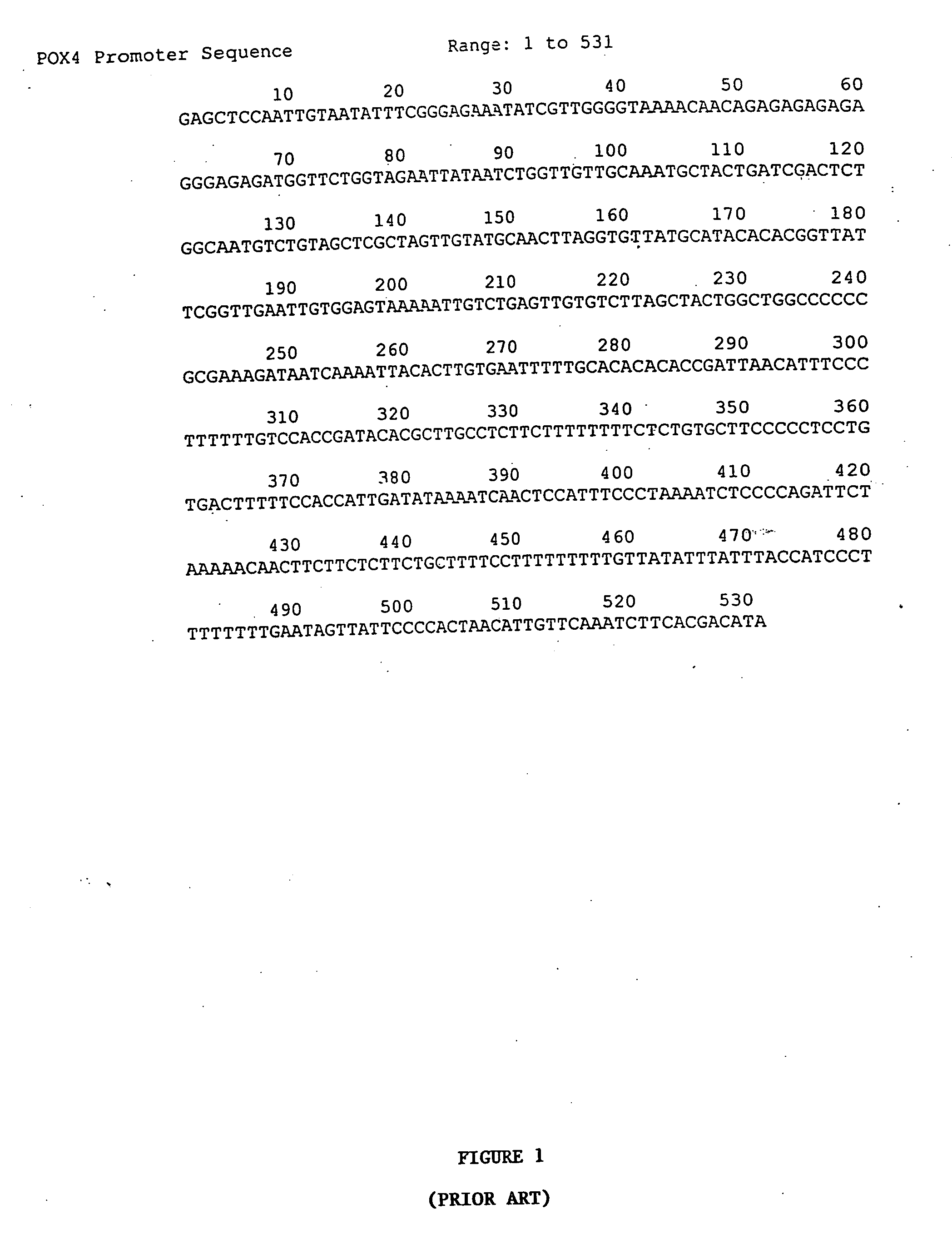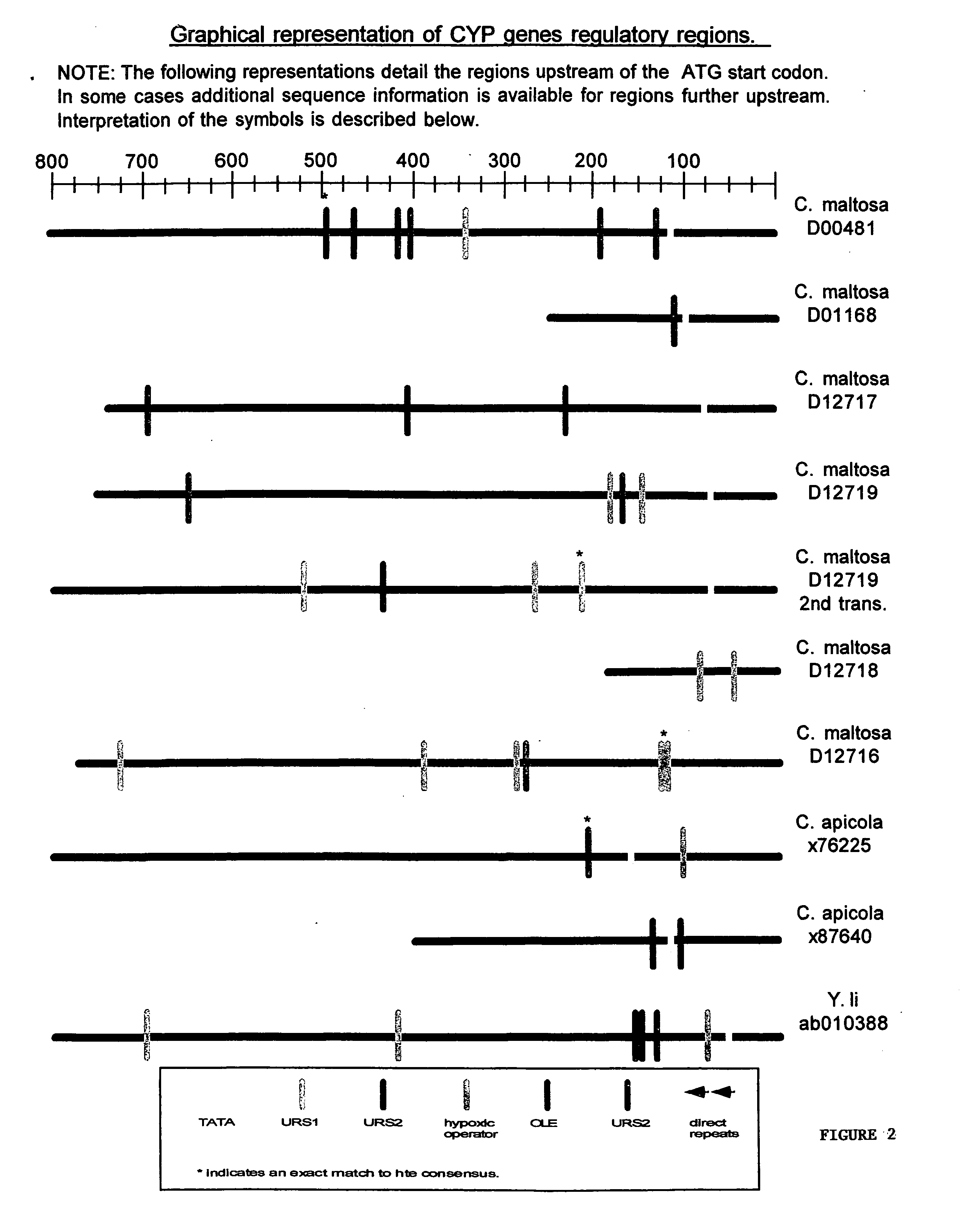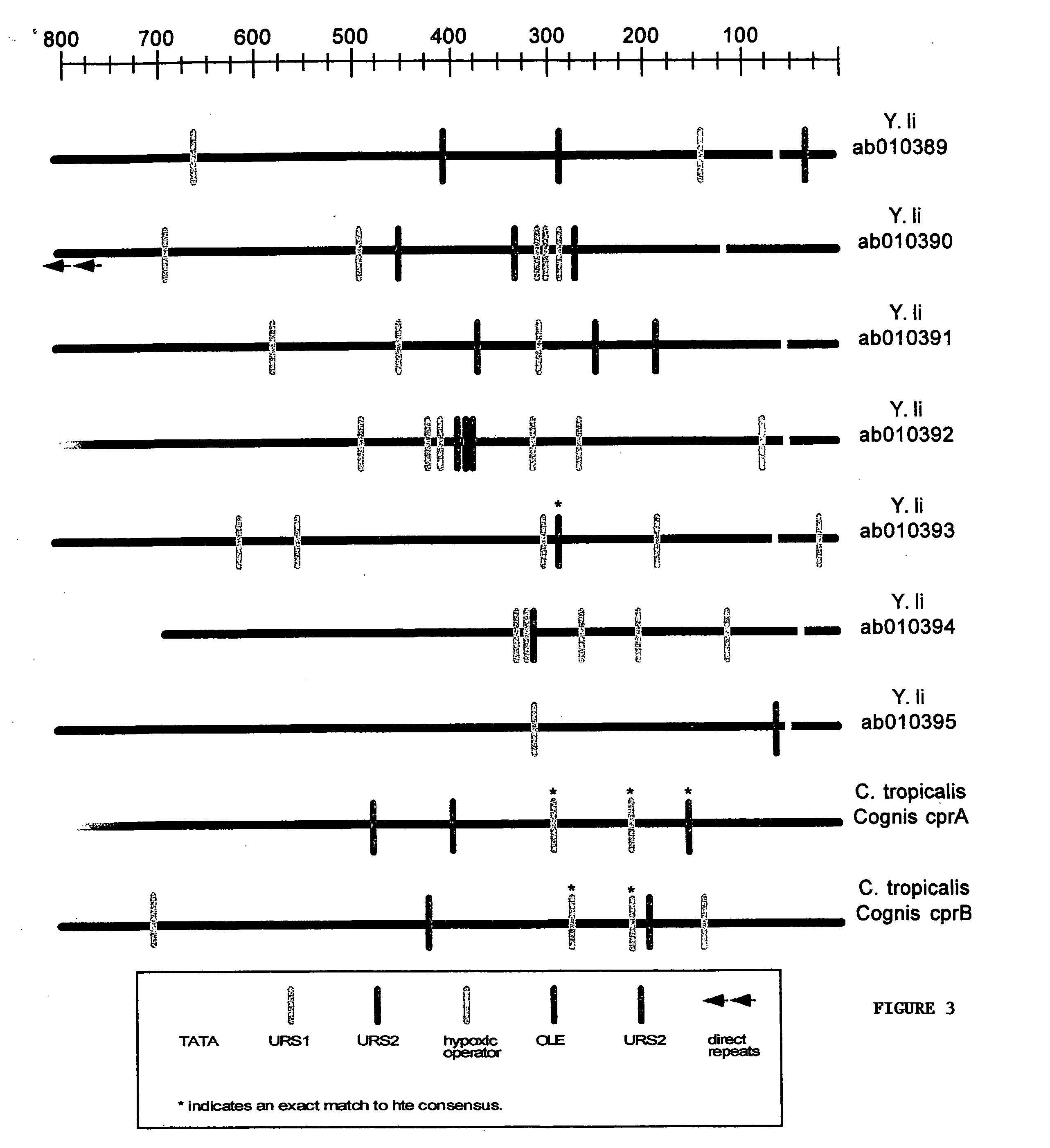Promoter motifs in Candida tropicalis
a technology of promoter motifs and candida tropicalis, which is applied in the field of promoter motifs in candida tropicalis, can solve the problems of shortening of chain lengths, degrading of dicarboxylic acids, and shortening of chains in mixtures containing shorter chains
- Summary
- Abstract
- Description
- Claims
- Application Information
AI Technical Summary
Benefits of technology
Problems solved by technology
Method used
Image
Examples
example 1
[0070] A detailed sequence analysis of the promoter and upstream regulatory regions was performed on CYP and CPR genes. A direct sequence analysis was performed by comparison of all the upstream regions using the Clustal G algorithm and a search for consensus sequences, direct repeats, and palindromes. Consensus sequences were derived from two sources, previous analysis done in S. cerevisiae and by looking for novel repeated motifs found in multiple CYP and CPR genes.
[0071] The Genbank CYP and CPR genes were harvested using the BLAST tool found at the NCBI website. Saccharomyces cerevisiae promoter consensus sequences were found at the Saccharomyces Genome Database. Sequence analysis was performed using the following sequence analysis software: (i) DAMBE (Data analysis and Molecular Biology in Evolution), version 3.7.49, written by Xuhua Xia; (ii) Clustal G, version 1.0, Thompson J. D. et al., (1997) “The Clustal X windows interface; flexible strategies for multiple sequence alignm...
example 2
[0078] Deletion and / or Deactivation of an Upstream Repressing Sequence in CYP52A3A
CYP52A3A sequenceURS1-AAACGA-position 1007URS2-AAAGCCA-position 666 10 20 30 40 50 60(SEQ ID NO: 106)GACATCATAATGACCCGGTTATTTCGCCCTCAGGTTGCTTATTTGAGCCGTAAAGTGCAG 70 80 90 100 110 120TAGAAACTTTGCCTTGGGTTCAAACTCTAGTATAATGGTGATAACTGGTTGCACTCTTGC 130 140 150 160 170 180CATAGGCATGAAAATAGGCCGTTATAGTACTATATTTAATAAGCGTAGGAGTATAGGATG 190 200 210 220 230 240CATATGACCGGTTTTTCTATATTTTTAAGATAATCTCTAGTAAATTTTGTATTCTCAGTA 250 260 270 280 290 300GGATTTCATCAAATTTCGCAACCAATTCTGGCGAAAAAATGATTCTTTTACGTCAAAAGC 310 320 330 340 350 360TGAATAGTGCAGTTTAAAGCACCTAAAATCACATATACAGCCTCTAGATACGACAGAGAA 370 380 390 400 410 420GCTCTTTATGATCTGAAGAAGCATTAGAATAGCTACTATGAGCCACTAT...
example 3
[0083] Addition of an Upstream Activating Sequence in CYP52A3A
ORE - C / T GGTT A / G TT C / A / G (SEQ ID NO:4)
[0084] In order to add the ORE at position 666 of the CYP52A3A promoter, first a oligonucleotide beginning at position 600 and extending toward the 3′ end at position 770 is made with the exception that base pairs 666-672 are altered. The changes are shown and highlighted below. The AAACCA motif is replaced with TGGTTGTTG.
(SEQ ID NO:115) 610 620 630 640 650 660CAAGACTTGCATAATTCGAGCTTGGGAGTTCACGCCAATTTGACCTCGTTCATGTGATA 670 680 690 700 710 720AAAGATGGTTGTTGAAAGGTAATTAGCAGACGCAATGGGAACATGGAGTGGAAAGCAATGGA 730 740 750 760 770AGCACGCCCAGGACGGAGTAATTTAGTCCACACTACATCTGGGG
[0085] PCR primers as made and used so as to amplify the above DNA fragment.
(SEQ ID NO:109)Primer #1 is 5′ CAAGACTTGCATAATTCG 3′and(SEQ ID NO:110)Primer #2 is 5′ CCCCAGATGTAGTGTGGAC 3′.
[0086] Additional primer...
PUM
| Property | Measurement | Unit |
|---|---|---|
| Length | aaaaa | aaaaa |
Abstract
Description
Claims
Application Information
 Login to View More
Login to View More - R&D
- Intellectual Property
- Life Sciences
- Materials
- Tech Scout
- Unparalleled Data Quality
- Higher Quality Content
- 60% Fewer Hallucinations
Browse by: Latest US Patents, China's latest patents, Technical Efficacy Thesaurus, Application Domain, Technology Topic, Popular Technical Reports.
© 2025 PatSnap. All rights reserved.Legal|Privacy policy|Modern Slavery Act Transparency Statement|Sitemap|About US| Contact US: help@patsnap.com



